|
|
|
SHIVA
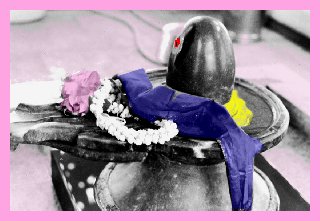 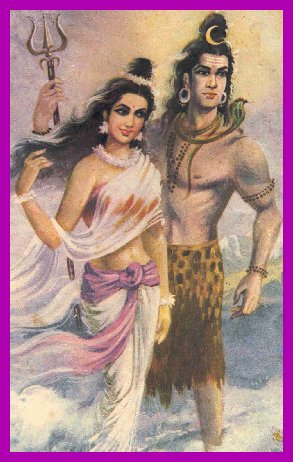 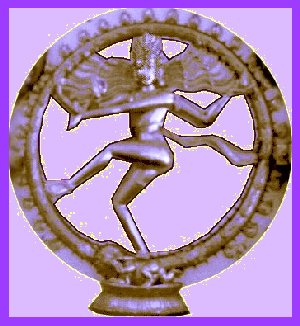
Shiva Lingam-Yoni Shiva as Lord of the Beasts with Parvati Shiva Nataraja--Lord of the Dance
Images used with permission.
Basic Description: Shiva is one of the main Deities worshiped in Hinduism. Amember of the Hindu trimuti, the others are Brahma and Vishnu. Shiva is portrayed as a wanderer, destroyer, and the god of the dance. Shiva-Rudra is considered to be the destroyer of evil and sorrow, whereas Shiva-Shankara is the doer of good. Shiva lives on Mount Kailasa in the Himalayas. Alternate Names: Mahadeva (Great god), Rudra, Mahayogi, Pashupati, Nataraja (Lord of the Dance), Bhairava, Vishwanath, Bhava, Bhole Nath. Parvati’s other names are Uma, Gauri, Durga, Kali, and Shakti. History/Practices: The name of Shiva is not found in the Vedas; however he is associated with Rudra. It is possible that Shiva was a non-Aryan god adopted by the Indo-Aryans. The name Shiva means auspicious. Worship and practice for the followers of Shiva closely resemble that of all Hindu worship, with the addition of the focus on the Lingam. The Lingam is the object of worship and adoration in worship devoted to Shiva. The lingam is the physical representation of Shiva. The word lingam literally means a sign or distinguishing mark, and it refers to Shiva's reproductive organ, the symbol of his male virility and power. Shaivites often distinguish themselves by marking themselves with three horizontal lines on their forheads. Iconography: Inart Shiva is depicted as white, but with a black neck.He is dressed in a tiger skin.His hair is bound up with a snake; he wearsanother around his neck and a third across his chest.He wears the symbol of the moon and has athird eye on his forehead. Shiva is also portrayed as the lingamand as the Lord of the Dance. Mythology: Some myths of concerning Shiva: Rudra Birth Myth: Thelord of beings and the dawn had a child. The child was weeping and his father asked him why. The child said that it was because his evilwas still with him and because he had not yet been given a name. His father said that his name would be Rudrasince he was weeping (rud).Shiva Birth Myth: Brahma and Vishnu were born first, they were alone together arguingabout who was the most powerful. Suddenly before them appeared a lingam. The lingam went up as far as they could see and down as far as theycould see. Together they decided to tryand explore it. Vishnu became a boar andtraveled down for a thousand years, but never found a base. Brahma became a goose and traveled up for athousand years, but never found a top. They both returned to where they had started and the lingam becameShiva, thus proving that Shiva was the most powerful.Wanderer Myth: Thislegend says that Brahma and Shiva were born at the same time and instantlybegan fighting for superiority. In thebattle Shiva cut off one of Brahma’s heads and his hand instantly becameparalyzed. Since Shiva was weakened,Brahma unleashed a powerful demon on him and Shiva ran and took refuge in thecity of Benares. There he was absolved of his crime and thehead was removed from his hand, but he was condemned to a life of wandering.Black Neck Myth: Whilethe great milk ocean was being churned the serpant spit poison out at theocean. In order to keep it from goinginto the ocean, Shiva caught it in his mouth and swallowed it and Parvati, tokeep it from poisoning him choked him, trapping it in his throat. This is what gives him a black neck.Marriage to Sati Myth: Daksha, son of Brahma, had a daughter named Sati who was quitelovely. When the time came for her tomarry, he invited all of the gods to come so that she could have her choice. However, he did not invite Shiva because hethought him not good enough for his daughter. Sati adored Shiva and when she saw that he was not among those assembledshe threw the wedding garland into the air and implored Shiva to come andreceive it. Instantly he appeared anddid so and the stunned Daksha was forced to give Sati to him in marriage.Death of Sati Myth: Some time later another assembly of the gods was held and when Dakshaentered Shiva did not rise in respect, this began a feud between them. Sati came to her father to find out the causeof his hatred of Shiva and argued to defend him, when her father would notlisten, she threw herself on the sacrificial fire to redeem her husband. When Shiva heard of this he was infuriatedand went straight to Daksha’s house and killed him, he then took the body ofSati and in his madness and grief began to dance a furious dance which shookthe world. Vishnu was concerned by theeffect of this dance and feared what would happen if it was allowed to continue,so he took the body of Sati from Shiva and cut it into many pieces and spreadthem over the earth. Once Sati’s bodywas gone Shiva came to himself and repented his actions and the death ofDaksha. He restored Daksha to life, butsubstituted a goat’s head for Daksha’s. Eventually Sati was reborn as Uma or Parvati.Third Eye Myth: Oneday Parvati snuck up behind Shiva and put her hands over his eyes. Instantly the worlds were plunged intodarkness, but a third eye sprung up on Shiva’s forehead and saved the universe.Lingam Myths: Thefirst Lingam origin myth is found in the Shiva birth myth given above. 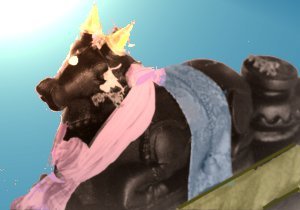 Hermits Wives: 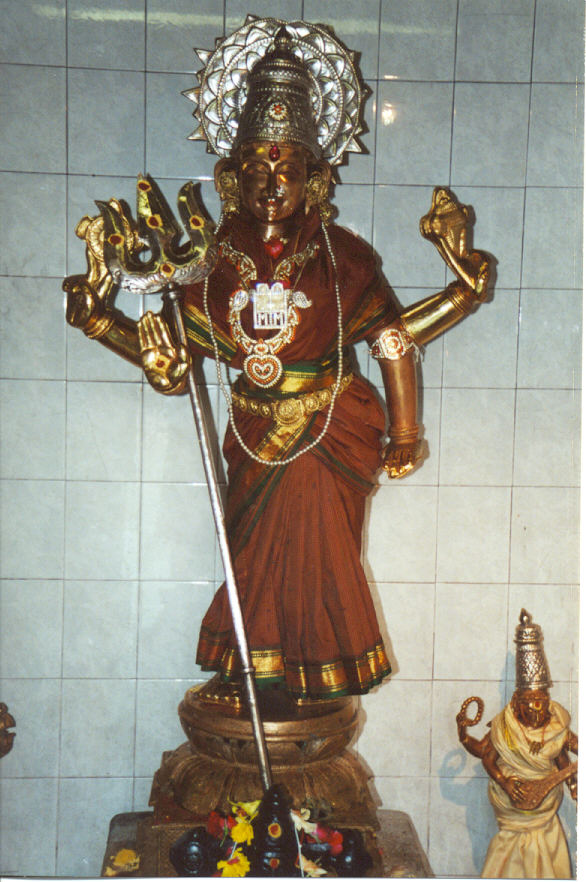 Afterthe death of Sati, Shiva wandered the wilderness. One day in the woods he came across the wivesof some hermits, who asked him about his madness. He explained he was sad because of the deathof his wife. One of the women laughed atthis and exclaimed that no one would marry someone looking so ragged andill. At this Shiva was infuriated andgrabbed her intending to rape her. Her husbandcame just as this happened and cursed Shiva to be forever worshipped in theform of the Lingam. Afterthe death of Sati, Shiva wandered the wilderness. One day in the woods he came across the wivesof some hermits, who asked him about his madness. He explained he was sad because of the deathof his wife. One of the women laughed atthis and exclaimed that no one would marry someone looking so ragged andill. At this Shiva was infuriated andgrabbed her intending to rape her. Her husbandcame just as this happened and cursed Shiva to be forever worshipped in theform of the Lingam.Bhrigu’s Curse:The sage Bhrigu came to consult Shiva, butwas forced to wait outside for a long time.When Shiva and Parvati eventually came to the door it was apparent thatthey had been making love.The sage,angry at having been made to wait, cursed Shiva to be worshipped in the form ofthe Lingam. Riding Animal: Shiva's riding animal is a white bull named Nandi, which means the joyful. Nandi was given to Shiva by Daksa-Brahma, who is also referred to as Prajapati. Consort: Sati,who dies and becomes Uma or Parvati. Other References on the Karma-to-Grace website:
Sources: Danielou, The Myths and Gods of India. Rochester, Vermont: Inner Traditions International, 1991. Moor, Edward. The Hindu Pantheon. Los Angeles: Philosophical research society, 1976.Thomas, P. Epics, Myths and Legends of India. Bombay, India: D. B. Taraporevala Sons & Co. Private Ltd, 1961.
|
|







 Afterthe death of Sati, Shiva wandered the wilderness. One day in the woods he came across the wivesof some hermits, who asked him about his madness. He explained he was sad because of the deathof his wife. One of the women laughed atthis and exclaimed that no one would marry someone looking so ragged andill. At this Shiva was infuriated andgrabbed her intending to rape her. Her husbandcame just as this happened and cursed Shiva to be forever worshipped in theform of the Lingam.
Afterthe death of Sati, Shiva wandered the wilderness. One day in the woods he came across the wivesof some hermits, who asked him about his madness. He explained he was sad because of the deathof his wife. One of the women laughed atthis and exclaimed that no one would marry someone looking so ragged andill. At this Shiva was infuriated andgrabbed her intending to rape her. Her husbandcame just as this happened and cursed Shiva to be forever worshipped in theform of the Lingam.